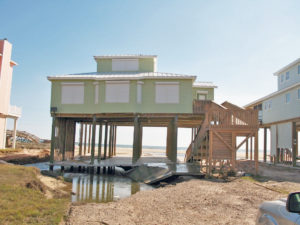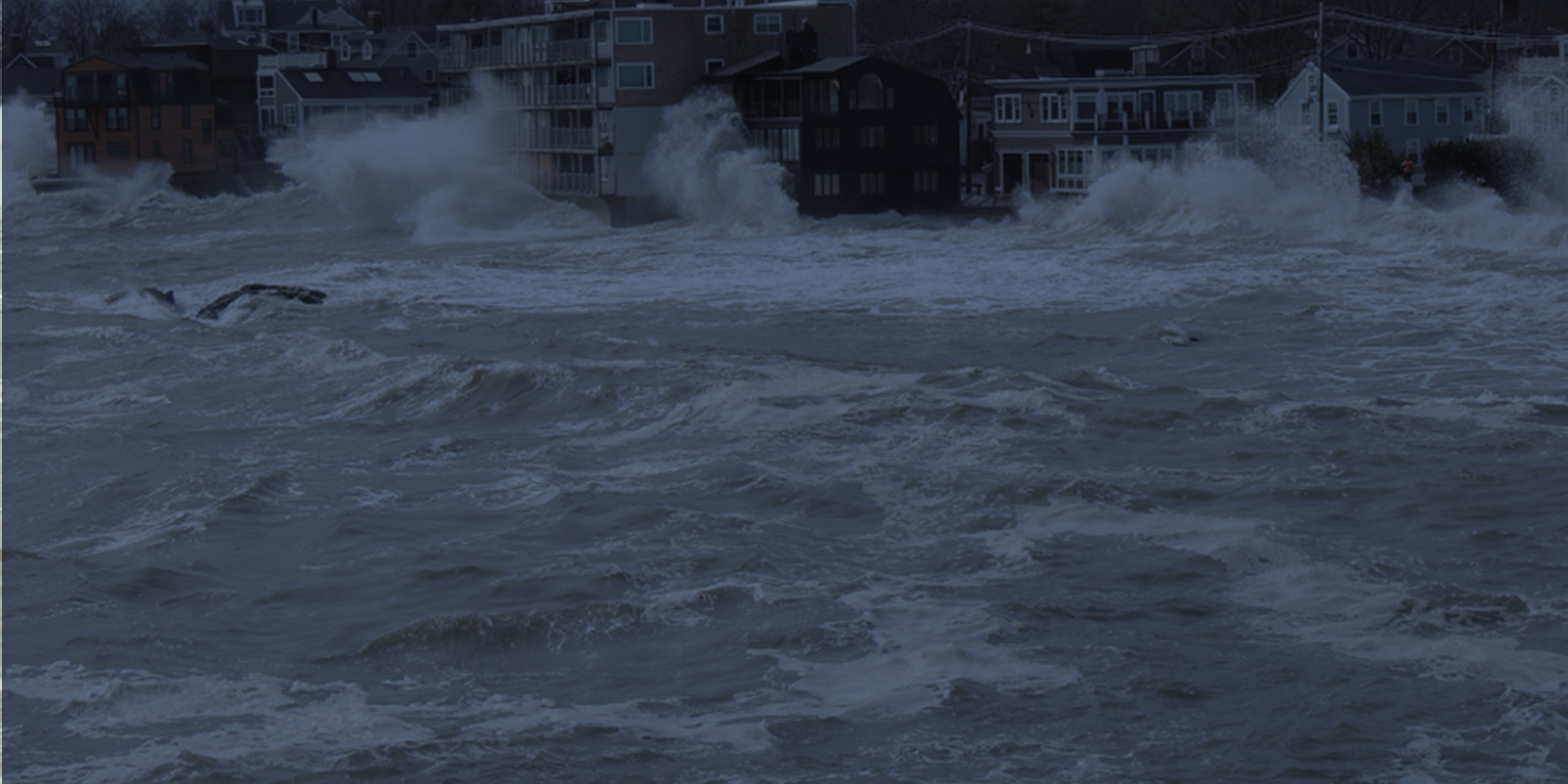Hurricanes are known for their capability to produce widespread devastation resulting from extreme environmental forces. Damage from hurricane force winds is often memorialized, and sometimes sensationalized, during post-storm media coverage. Yet, nearest the coastline, the magnitude of structural damage caused by storm surge can easily exceed that which is visibly obvious and caused by wind.
The most severe forces that hurricanes can impart on buildings, bridges, and other structures are those associated with moving water and breaking waves. These hydraulic loads can cause severe structural damage and collapse by directly impacting above-ground elements of a structure. Turbulent, fast-moving water can also cause erosion and scouring, which can undermine foundations, lower ground elevations, and destroy coastal dunes and other protective erosion control features. Water from storm surge-caused inundation can cause disastrous damage to a large area in a short period of time.
Scour occurs when fast-moving water flows past objects resting on or embedded into erodible soil, such as slabs-on-grade and pile foundations in sandy coastal regions, as shown in the figures below. Even localized scour can affect individual elements of a building’s foundation and erode soils supporting portions of slabs-on-grade (Figure 1). More severe scouring can cause deeper erosion of soils and subsequent structural failure of the majority or the entirety of a building foundation system (Figures 2, 3 and 4). Therefore, even a structure situated well above the storm surge waters and storm-induced waves can become structurally compromised, and sometimes collapse, due to the loss of bearing soils or reduction of pile embedment. Scour similarly affects roadways and other pavements by displacing the soil and other materials by which they are directly supported.

Figure 1. Localized scour at a foundation for a coastal residence

Figure 2. More severe erosion and scouring, causing collapse of a slab-on-grade and loss of several feet of pile embedment

Figure 3. Erosion and scour resulting in an unintentionally suspended concrete slab

Figure 4. Erosion caused displacement of pilings beneath a coastal residence, requiring temporary shoring
Nelson’s team of professionals has decades of experience evaluating many thousands of coastal structures that have been subjected to storm-induced surge, erosion, and scour.

